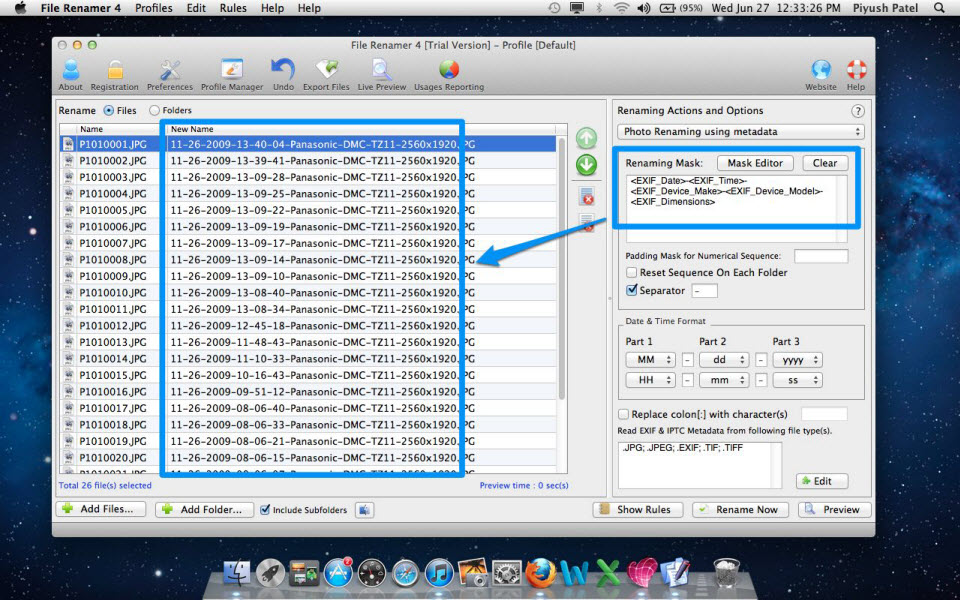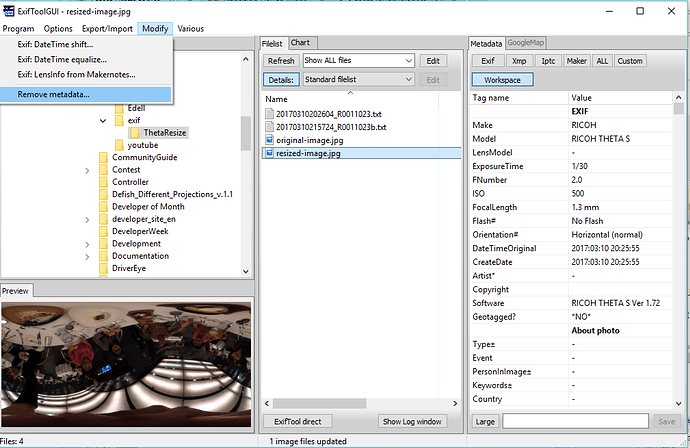

- #Use exiftool to rename files with camera model iso#
- #Use exiftool to rename files with camera model zip#
- #Use exiftool to rename files with camera model download#
dng's w/ Camera Model EXIF of "Canikon" when using cr2hdr? Step 2 lets you view the results of your choice.Anyone else getting. Add numbers 1 2 3 …Įxamples: IMG_8298.JPG could be changed toĮF17-85_85mm_f5.6_i100_s1-6_IMG_8298.JPG (maximum information keeps all of the old name)ĮF17-85_85mm_f5.6_8298.JPG (Good for testing lenses: lens type, focal length, aperture, and original file number.) Keep only numbers from original file name.ĭo not keep original file name. Options for the last portion of the new name include In shutter speeds that include slash (/) characters, i.e., 1/6 (second), / is replaced by -, i.e., shutter speed will appear as s1-6.
#Use exiftool to rename files with camera model iso#
Where focal length is followed by ‘mm’, aperture is preceded by ‘a’, ISO speed is prefixed by ‘i’, and shutter speed is prefixed by ‘s’. Brackets are used below to separate fields- they’re not a part of the file name. New (renamed) file names have the following structure, where all fields except the last are optional.

#Use exiftool to rename files with camera model zip#
In Windows Explorer, double-click on the downloaded zip file.
#Use exiftool to rename files with camera model download#

View all EXIF data uses Phil Harvey’s ExifTool, which is included in Imatest installations, but is frequently updated. If you clicked on a file name you can also view all EXIF data (which can be 200 or more lines ) by clicking the View all EXIF data button at the bottom of the Rename Files window, which opens the window shown below. The EXIF data appears in the box in the middle of the Rename Files window that displayed the brief instructions. You can examine selected EXIF data in individual files by clicking on the file name in the large window. You can use wildcards (*) in the file name window to reduce the number of visible files. Select file opens a window that lets you navigate to a folder and select a single file or a batch of files using the usual methods for doing so. You can go back and try different rename options if needed. The names can be individually edited if necessary. Preview the new file names using EXIF data in each file. Select options for renaming the files: what to add (for example, aperture and focal length) and what to keep from the original file names (all, numbers-only, or nothing). You can use the usual Windows tricks, including wildcard characters, to facilitate the selection. Open a window to select the folder and files to rename. There is a four-step sequence for renaming files. This opens the Rename Files window.īrief instructions are displayed in a box near the middle of the window. But worry not, gentle reader, Rename Files can automatically rename batches of files to meaningful names, likeĪfter you’ve acquired a batch of image files and loaded them in a folder on your computer, press Rename Files on the right of the Imatest main window.

After you’ve done this about ten times you may be tempted to think unkind thoughts about Microsoft. You’re out of luck if you want the lens model. To view the EXIF data in Windows Explorer (typically focal length, aperture, and a few others), right-click on the file name, click on Properties, click on the Details tab, then scroll down a bit. If you test several lenses at several focal lengths and apertures you can easily generate hundreds of files with similar names- none of which make sense unless you’ve taken careful notes or view the EXIF data for the individual files. Most cameras write sequences of images with file names that resemble All documentation versions Meaningless file names


 0 kommentar(er)
0 kommentar(er)
